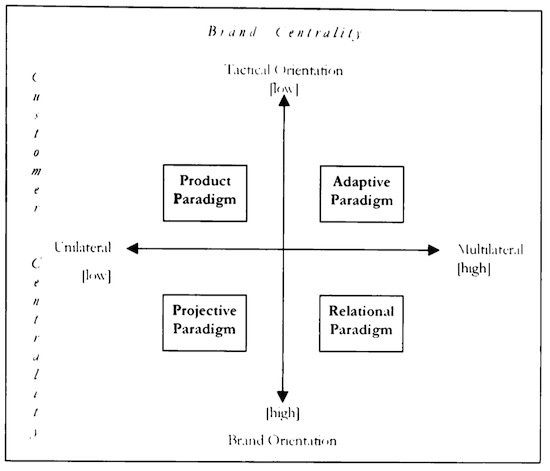This post is part of my bachelor paper ‘The Evolving Role of Creativity in Brand Management’. You can see the other posts and the table of contents here.
The projective paradigm builds on the product paradigm and further complements and amplifies it. It was brought into existence by a series of mergers and acquisitions that publicly demonstrated multiples between earnings and acquisitions values of up to twenty to thirty. These earnings lead to a acknowledgment of the value of brands, which in turn led to a proliferation of brand management research and a consolidation of a strategic approach to brand management (Louro & Cunha 2001, p.859). Brands are here seen as the focal platform of a companies’ strategy formulation and furthermore as an identity systems that all company offers have to be integrated with.
“Within this perspective brand management is focused on reinforcing and developing brand positioning and meaning by achieving a coherent focus across the brand portfolio and projecting a consistent message to all stakeholders.” (Louro & Cunha 2001, p.860)
As the term projecting suggests, the organisation is seen as the primary source of meaning and value, which is derived from the “creation, development and communication of a coherent brand identity (Kapferer 1992; Aaker 1996)” (Louro & Cunha 2001, p.860) that is projected onto the receiving consumers. In a historical context, the emergence of this paradigm can be related to Holt’s (2002) modern branding paradigm, which focuses on the communication of desirable life-worlds to the then emerging post-war mass consumer culture.
Next: The adaptive paradigm.
—
Louro, M.J. & Cunha, P.V., 2001. Brand management paradigms. Journal of Marketing Management, 17(7), pp.849–875.


